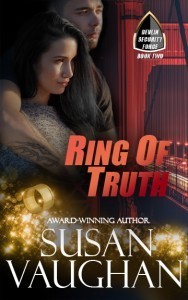Lea Wait's Blog, page 293
April 26, 2015
Sometime or Dorothy Cannell Considers Reform
Dorothy Cannell: This coming Thursday morning my husband and I will be setting off on a drive to Washington, D.C.; well, a little disagreement regarding the day. I claim that a 4 a.m. departure makes it Wednesday night. That’s what procrastinators (of which I am a pitiful case) do – waste crucial seconds splitting hairs. Actually I prefer the term shilly-shallier because it doesn’t sound so clinical. Whatever! I should be reveling in anticipation of departure because we will be attending that wonderful annual mystery conference Malice Domestic; but I have done it to myself again – put time to the gallop while I’m still desperately trying to get done what should have been accomplish days, weeks, months, years ago.
I wrote in last month’s blog that I was working on a short story. This was true. I endeavor not to lie outside of fiction and I did have two paragraphs completed. It was a plot I’d had in mind for going on half a century and should have been a snap. But then I began agonizing over whether I should employ a double twist at the end and spent several weeks mooning around the house debating the issue – because it would have turned my protagonist into a murderer in addition to the one I already had lined up for the job.
Then came the cowardly thought – why not set this story aside and do one based on another plot I’d  toyed with back in the dark ages. A nudge in this direction came from noting that Down the Garden Path has been selling well as an e-book. It featured the flowers sisters, Misses Hyacinth and Primrose Tramwell, ladies in their sixties who had a penchant for cheating at cards for financial gain in the interest of keeping the roof of their ancestral home over their heads before turning to detection. I would have loved to write more books about them but my publisher preferred I focus on the Ellie Haskell series that began with The Thin Woman. Some fuzzy time back I did do one short story about the flower sisters as I think of them and it now occurred to me that that here was a plot ideally suited to their personalities.
toyed with back in the dark ages. A nudge in this direction came from noting that Down the Garden Path has been selling well as an e-book. It featured the flowers sisters, Misses Hyacinth and Primrose Tramwell, ladies in their sixties who had a penchant for cheating at cards for financial gain in the interest of keeping the roof of their ancestral home over their heads before turning to detection. I would have loved to write more books about them but my publisher preferred I focus on the Ellie Haskell series that began with The Thin Woman. Some fuzzy time back I did do one short story about the flower sisters as I think of them and it now occurred to me that that here was a plot ideally suited to their personalities.
But did I sit write down and bang it out? Of course not! More mooning occurred, but of the twitchy sort because submissions for publication must be received by April 3Oth. Then when I did slither down at the computer I decided I could save time in describing Hyacinth and Primrose by looking up what I said of their physical appearance, mannerisms and speech patters by searching through Down the Garden Path. And then it seemed incumbent to brush up on how I’d portrayed Cloisters, their home, in the village of … something. This turned out to be Flaxy Meade. And I prolonged my coffee break thinking how charming that name sounded. Then insidiously the question crept in as to whether it was plagiarism to crop sentences from one’s own work. I thought about presenting this legal concern to my retired lawyer husband. But would he

Dorothy Cannell and Margaret Maron at the Mabanquet
expect a fee which I would be obligated to disclose to the I.R.S.? Also a wife can be limitedly demanding and I needed him as my go-to authority on the game of bridge, seeing the story opens with one and all I know on the subject is that it involves cards, some red, some black.
On a positive note the Post Office has this glorious thing – overnight delivery. But anxiety still hovers. I’ll have to pack, which means searching through the closet that I’ve been thinking about organizing for – well let’s not say how long – for clothing suitable for the light of day, let alone going on a trip. Shoes are the biggest problem, most being singles because their partners, having grown fed up with neglect, have run away.
I’m going to reform. Or at least I’m thinking about it, while wondering if I shouldn’t have written the story I first thought about. Oh, well! Another day, another week, another month …
April 24, 2015
Weekend Update: April 25-26, 2015
 Next week at Maine Crime Writers there will be posts by Dorothy Cannell (Monday), Vicki Doudera (Tuesday), Lea Wait (Wednesday), Barb Ross (Thursday), and Kate Flora (Friday). And next weekend (May 2 and 3) many of us will be at Malice Domestic in Bethesda, Maryland. We hope to be able to post news and updates from there.
Next week at Maine Crime Writers there will be posts by Dorothy Cannell (Monday), Vicki Doudera (Tuesday), Lea Wait (Wednesday), Barb Ross (Thursday), and Kate Flora (Friday). And next weekend (May 2 and 3) many of us will be at Malice Domestic in Bethesda, Maryland. We hope to be able to post news and updates from there.
WINNERS! WE HAVE WINNERS!
The ever-clever Kate Flora actually acquired three pairs of library socks. We tossed the names of everyone who posted a comment during library week into a hat and randomly selected three to receive this unique prize. Congratulations to Bonnie Finn, Heather Greene, and Anne Mosey.
In the news department, here’s what’s happening with some of us who blog regularly at Maine Crime Writers:
Lea Wait: This weekend I’m in Springfield, Massachusetts, for the New England Society of Children’s Book Writers and Illustrators conference. For anyone attending, I’ll be at a mentor table Friday afternoon from 4 until 4:30, signing books Saturday, and running two workshops Sunday: one on incorporating real people into historical fiction, and one on editing. Hope to see some friends there!
The next Tuesday, April 28, I’ll be speaking at the Camden-Rockport Elementary School about my Seaward Born, and then running two writing workshops for fourth graders there. And – as pointed out above – Thursday I’ll be heading to Bethesda, Maryland, for Malice Domestic. Excited that three Maine Crime Writers are Agatha nominees this year — Kate Flora, Kathy Lynn Emerson, and me! No matter who wins .. that guarantees a great weekend.
Skidompha Public Library with Dorothy Cannell, Kate Flora, and Barb Ross: If you missed being there in person back on March 26th, never fear, you can hear three talented mystery writers talk about their craft by clicking on the link below.
Enjoy!
Only a few more days until Brenda Buchanan’s book debut:
Brenda Buchanan’s debut mystery, Quick Pivot, launches on Monday, April 27! Moving back and forth between 1968 and the present day, Quick Pivot features a contemporary Maine newspaper reporter who draws on his late mentor’s lessons to solve a 1968 murder, and becomes a target himself when his investigation threatens to expose long-held secrets. It’s the first in a series about Joe Gale, a contemporary reporter with old-school style who covers the Maine crime beat. Quick Pivot is available in digital format wherever ebooks are sold.
On the Falmouth (Mass) Public Library blog this week, it’s shelf talk with Kate Flora. Childhood favorites, author influences, what I’m reading: http://www.falmouthpubliclibrary.org/?/blog/entries/shelf-talk-with-kate-flora/
On another note, since we are about “All things Maine” and in case you’ve missed it, the Bangor Daily News’s Seth Koenig now does a great daily update called Greater Portland Lunch Break with food, events, and news. A perfect bite-sized bit of information. You can subscribe here: http://www.tinyletter.com/GreaterPortlandLunchRush
Want us to give away more of those socks? Maybe a Liberty Graphics tee shirt? Do you like give-aways? Because we do, so read our weekend updates and see what you might win.
An invitation to readers of this blog: Do you have news relating to Maine, Crime, or Writing? We’d love to hear from you. Just comment below to share. Don’t forget that comments are entered for a chance to win books and sometimes very special moose and lobster cookie cutters.
And a reminder: If your library, school, or organization is looking for a speaker, we are often available to talk about the writing process, research, where we get our ideas, and other mysteries of the business. Contact Kate Flora: mailto: kateflora@gmail.com
April 23, 2015
1001 Uses For A Bread Tab, Or Not.
Al Lamanda here.
A friend of mine is a high school English teacher and he recently asked me to speak with some of his students that were bitten by the writing bug. Always happy to help a friend (a free lunch was involved) I went to talk to the hopeful next generation of authors. There was a total of thirteen (right there a bad start) in the group. Six guys, six gals and one I’m still not sure about.
So after my friend made the introduction we chatted a bit about my writing and I threw the floor open to questions. It kind of went like this.
Girl. “Can you tell us some of your secrets?”
Me. “If I told you they wouldn’t be secrets anymore, now would they?”
Girl. “Okay, maybe not secrets, but helpful tips.”
Me. “Buy low and sell high and never invest more than you can afford. Also, never discuss religion or politics with family at a holiday dinner table. It won’t end well.”
The I’m still not sure about person thought that was funny and burst into hysterical cackle while my teacher friend wore a look of sheer terror on his face.
Girl. “I mean tips on writing.”
Me. “Write a lot. All the time. Every spare moment, write. Write about anything you want. Writing is like anything else in life, you have to practice to get good at it.”
The girl gave way to one of the guys.
Guy. “Can you share some of what you’re leaned?”
Me. “Sure. Those little tabs that come with a loaf of bread, you know, the little square things, they are excellent for keeping your place on a roll of duct tape. Also, if you drive an older car and the headlights get yellow; don’t waste money on those treatments you see advertised on TV. Regular old toothpaste and a rag work just as well. Try it, you’ll see.”
Guy. “What does that have to do with writing?”
Me. “You never know. Also, you can rub a walnut on scratched furniture to cover the marks, and those bread tabs I mentioned are great for labeling all those wires behind your computer.”
Guy. “I’m confused.”
Me. “Join the club. It only gets worse over time.”
The guy sat and another girl had a question.
Girl. “When you said a walnut, do you mean a real walnut?”
Mr. “Yup. Another thing you should learn is that if you rip off a really long piece of dental floss, it’s perfect for slicing a cake into perfect triangles.”
Girl. “Really?”
Me. Yup. Cheese, too.”
Girl. “I love cheese.”
Me. “Hey, who doesn’t?”
The girl gave way to another boy in the group. He was a bit on the angry side.
Boy. “How about telling us something useful?”
Me. “I notice that your shirt is pretty wrinkled. If you toss it in the drier for five minutes with a few ice cubes you won’t need to iron it.”
Girl. “I hate ironing.”
Me. “Who doesn’t? Also you can light an uncooked strand of spaghetti and use it to light jarred candles without burning your fingers.”
Boy. “I mean something useful about my writing.”
Me. “What do you write?”
Boy. “Science fiction.”
Me. “What was your last grade in science class?”
The boy turned a shade of red and didn’t answer my question.
Girl. “I like that ice cube in the drier thing, anymore useful things like that?”
Me. “This summer, when you have that backyard barbeque, use a muffin tin to serve the condiments. They’ll all be in once easy to pass around place and cut down on washing dishes.”
The science fiction boy, visibly upset, wagged a finger at me.
My friend the teacher was looking out the window now and humming softly.
Boy. “I stayed after school to talk about writing, not muffin tins.”
Me. “And we are. You look like you play sports.”
Boy. “Football.”
Me. “So you have a lot of sore muscles and bruises. If you wet a sponge, put it in a zip lock baggie and freeze it, you’ll have a perfect ice pack that will never leak when you use it.”
Boy “Really?”
Me. “Yup.”
Boy. “Okay, great, but can we please talk about writing now?”
Me. “Ah, but we are. You see I’m not trying to give you a hard time or sound like the helpful advice guy in the newspaper, but I do have a point to make. And that is to learn as much as you can about everything because you never know when you’ll use something you’ve learned in a story. Your hero or villain is trapped and has only a soda can pull tab as a weapon kind of thing. You like to write science fiction, but you failed science class. Even though it’s fiction, the science has to be grounded in reality or your story will sound false to a reader and it won’t get read.”
I saw a light bulb click on over science fiction boy’s head.
Me. “If you want to write a mystery, but no nothing about solving a crime then talk to the police about how crimes are solved. If your hero is a firefighter, how much do you know about fire and fighting one? Point is to learn as much as possible as it pertains to what you want to write about and you won’t hit a false note.”
Girl. “You’re saying we should write about what we know?”
Me. “What you know about your subject matter comes across in your writing. Before you write your story, do your homework and research on the subject matter so you have a sense of realism to your words.”
The group, even the I’m not sure kid was paying attention now.
Me. “Who is up for a little writing experiment?”
All in the group were.
Me. “Let’s try this. Each of you pick a topic you know nothing about and write a one thousand word short story. Don’t do any research, just write from the heart. Put it in an envelope and seal it. Mark it draft one. Then spend a few days researching the same topic and write a second draft using your newfound knowledge. Mark it draft two. We can meet again in a week and you can read your two stories and we’ll compare which one is better.”
All in the group happily agreed.
And as my teacher friend and I went to enjoy my free lunch, he asked, “That ice cubes in the drier thing really work?”
“Would I say something without researching it first?” I assured him.
Al Lamanda’s new mystery novel This Side of Midnight hits stores and will be available on line this July.
April 22, 2015
Willing Suspension of Disbelief
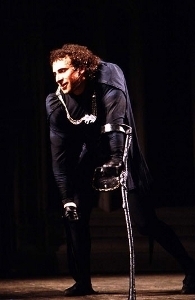 Kaitlyn Dunnett/Kathy Lynn Emerson here. The phrase “willing suspension of disbelief” was one I learned in college literature classes as a necessity if one was to enjoy fiction. I’ve been thinking about that lately. Certainly many classics, from Shakespeare’s Richard the Third to Sir Walter Scott’s Ivanhoe are far from historically accurate, but that never stopped readers from enjoying them. Why, then, is there so much emphasis on getting the details right when it comes to writing fiction today?
Kaitlyn Dunnett/Kathy Lynn Emerson here. The phrase “willing suspension of disbelief” was one I learned in college literature classes as a necessity if one was to enjoy fiction. I’ve been thinking about that lately. Certainly many classics, from Shakespeare’s Richard the Third to Sir Walter Scott’s Ivanhoe are far from historically accurate, but that never stopped readers from enjoying them. Why, then, is there so much emphasis on getting the details right when it comes to writing fiction today?
Yes, I’m playing devil’s advocate. I do think writers owe it to their readers to do their homework and avoid the most horrendous bloopers. On the other hand, there’s no way any writer can get every single nit-picky detail exactly right, especially if they write historical fiction. And for all writers, typos and continuity errors are bound to slip past even the most skilled proofreader. Yes, okay, a character put on a sports coat on page six and it somehow turned into a down jacket on page forty. Or maybe a character is called by the wrong name. It happens. A modern equivalent of the “willing suspension of disbelief” advice might be “don’t sweat the small stuff,” to which many would add “it’s all small stuff.”
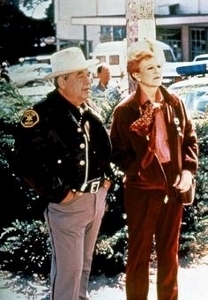 When I read for pleasure, I have difficulty doing this with historical mysteries set in the sixteenth century, a period I know far too well. Getting British forms of address wrong will pull me out of a story, no matter what century it is set in. I also find it jarring when certain forensic details—the smell of cordite; dead bodies continuing to bleed; calling what would probably be a constable in a small town a sheriff—pop up. But overall, I find I am much more forgiving than I once was.
When I read for pleasure, I have difficulty doing this with historical mysteries set in the sixteenth century, a period I know far too well. Getting British forms of address wrong will pull me out of a story, no matter what century it is set in. I also find it jarring when certain forensic details—the smell of cordite; dead bodies continuing to bleed; calling what would probably be a constable in a small town a sheriff—pop up. But overall, I find I am much more forgiving than I once was.
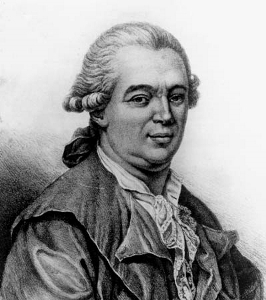 In my own historical novels, where once I used contractions like ’tis and avoided it’s like the plague, I’ve learned to relax. No one really cares that it’s, don’t, doesn’t, and other contractions weren’t yet in use in England in fifteen-whatever. As for other anachronisms, by all means avoid those that come from someone’s name (like mesmerize, from Franz Mesmer, who lived from 1734-1815) but if you write a novel about Chaucer, you’re not going to write it in Chaucer’s English. Very few people would be able to read it. A novel set in France or Spain is essentially “translated” into modern English. Why not use the same logic with one set in the past in England or America?
In my own historical novels, where once I used contractions like ’tis and avoided it’s like the plague, I’ve learned to relax. No one really cares that it’s, don’t, doesn’t, and other contractions weren’t yet in use in England in fifteen-whatever. As for other anachronisms, by all means avoid those that come from someone’s name (like mesmerize, from Franz Mesmer, who lived from 1734-1815) but if you write a novel about Chaucer, you’re not going to write it in Chaucer’s English. Very few people would be able to read it. A novel set in France or Spain is essentially “translated” into modern English. Why not use the same logic with one set in the past in England or America?
 A well-written novel that tells an engaging story can make me overlook a great many minor flaws. I can forgive a lot if I’m caught up in the plot. If the author’s voice is powerful enough to keep my eyes glued to the page, I barely notice any errors that slip in. That’s true for fiction set in the past and the present, and also for paranormal, urban fantasy, and futuristic novels, too. Far more important is whether the characters and their actions are believable.
A well-written novel that tells an engaging story can make me overlook a great many minor flaws. I can forgive a lot if I’m caught up in the plot. If the author’s voice is powerful enough to keep my eyes glued to the page, I barely notice any errors that slip in. That’s true for fiction set in the past and the present, and also for paranormal, urban fantasy, and futuristic novels, too. Far more important is whether the characters and their actions are believable.
So, what do you think, fellow readers? How much are you willing to forgive if the story and characters are strong enough to make you want to keep reading?
April 21, 2015
Bambi Go Home
Hello again from Sarah Graves, thinking today about innocent woodland creatures. Who belong, you should excuse my saying so, in the woods. Or if they eat up, befoul, and generally infest Eastport for very much longer, on my plate.
I mean don’t get me wrong, I’m as sorry about Bambi’s mother as anyone. I can’t even watch that movie. Or a lot of others: heck, when the little lion’s royal dad died, I was a wreck for a week. But —
anyone. I can’t even watch that movie. Or a lot of others: heck, when the little lion’s royal dad died, I was a wreck for a week. But —
But we are being swarmed by deer, here. Squads of them patrol the streets. The other night I watched half a dozen of them nearly getting hit broadside by a car barreling up the hill from the Happy Landings bar and grill. The night before as I walked the dog, one materialized out of the darkness at me, not a bit shy. She wanted a carrot; demanded one, even.
Because that’s the other thing about them: they’re not just hungry, and vermin-infested, and a traffic hazard. They’re tame, and way too numerous for what is a small but nevertheless fully functioning city, with sidewalks and streetlamps and so on. Why, you can get right up close to a group of half a dozen or so — but I advise no closer than about six feet, because that’s how far a flea can jump and ticks, I’ve heard, can teleport themselves right into your ear canal.
And don’t even get me started on what deer do to the gardens. Tulips chewed to the ground, blueberry bushes pruned to within a centimeter of their lives, hostas munched and sedum crunched and if you planned a vegetable garden this year, forget it. There are sprays that are supposed to repel them, so smelly I have to wear a respirator meant to filter out poison gas to apply them, but I’m pretty sure the deer just think it’s vinegar-and-oil for their salad. We use other methods, too: Irish Spring soap shavings in mesh bags, essence of coyote or wolf, motion-activated water sprays, invisible fences made of clear fishing line whose unexpected touch is supposed to startle them and send them fleeing.
I think those deer like being startled. To them, it’s a form of dinner theater. A cool shower is always nice, and the only spray that really works on them is a spray of bullets.
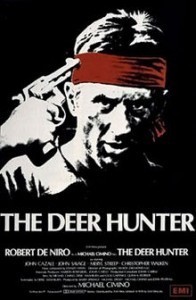 But! Do you know what it takes to get a deer-herd reduction operation going? I mean even after you get past the Bambi factor? In the latest issue of The Working Waterfront, Sandy Oliver reports on how Islesboro is going about it, and details just how difficult and complex, not to mention expensive, it can be.
But! Do you know what it takes to get a deer-herd reduction operation going? I mean even after you get past the Bambi factor? In the latest issue of The Working Waterfront, Sandy Oliver reports on how Islesboro is going about it, and details just how difficult and complex, not to mention expensive, it can be.
For one thing, the State of Maine owns all the deer so first a municipality has to get state permission for a special hunt. Then a plan for the hunt has to be approved by the citizens (good luck). The landowners have to give permission, and each owner can say what weapons are okay to use on his or her land. Arrangement for butchering and storage must be made. Safety concerns must be addressed. Not that any of this is unnecessary, but it’s all a huge undertaking.
And…it’s sad. Hey, even without the Bambi factor, I’m talking about a lot of animals who didn’t ask to be where they are, have no idea of the havoc they’re wreaking, and don’t “deserve” to be at the wrong end of a shotgun or crossbow, or on my dinner menu.
So I have a different idea. These creatures are owned by the State of Maine, right? So really, they’re just like a herd of somebody else’s cows. But now they’re grazing in our gardens, “fertilizing” our yards, and wandering around on the runway of our local airport, for pete’s sake. It seems only right that the owner of these animals should…
That’s right. Come and get them. Other parts of the state have a deer shortage, I hear, instead of the zillions of them that we enjoy. So instead of us shooting them (about which I shudder to think, actually: shades of Elmer Fudd) I hereby request that the State of Maine come and tranquilize the animals, load them onto comfy transport with helpful veterinarians and Department of Inland Fish and Wildlife staff, and take them to places where the air is clear, the food and cover are plentiful, and the future looks bright at least until next hunting season.
Otherwise, we’re going to have to start advertising for the deer-ish equivalent of the Pied Piper, because I just looked out the window and saw someone looking in. Reading over my shoulder, in fact, and from the expression on his face I’m pretty sure he doesn’t like what I’m writing.
And he has antlers.
April 20, 2015
Transitions Isn’t Just a Term For Fancy Lenses
First a couple of housekeeping details. I said I would share what my April Fools prank was for this year. It turned out to be on me. My granddaughter Piper sent home a cold through my wife who takes care of her and it hit with full force that day, rendering me barely able to function, let alone be a wiseguy. Second, Brenda Buchanan’s list of crime stories by county in response to the column I wrote back on March 13th was amazing and is worthy of a prize, so if you’re reading this, we need to arrange for something cool to be sent your way.
This getting ready for retirement stuff is extremely interesting. Not a day goes by without someone looking me right in the eye and saying, “So you’re really gonna do it,” almost immediately followed by “so what ya gonna do?” Depending my level of insanity at the moment, my reply varies but the most common one is, “Read the obituaries, If I’m not listed, I’ll probably get out of bed. I might get dressed and if the dog covers his nose and whimpers, it’s probably time to take a shower, then I’ll read until I decide to read some more, then I’ll write.” Notice, there’s nothing in my reply about jumping into 7011 new civic organizations or hobbies. I’ve seen too many people go down that path only to lament that their retirement life isn’t satisfying.
That’s not to say I’m checking out of the library profession completely. I’m remaining as a volunteer in the background for the Hartland library and will continue handling the sales for at least a year to give my replacement steady cash flow and more time to put their brand on the place. I’m also going to stay involved with the Maine Balsam Libraries Consortium as a cataloging resource and may even spend one day a week helping a school that’s not automated get their holdings into the catalog.
It took about four months to get my head to work through the whole identity thing. When I worked at the old Augusta Mental Health Institute, I knew a scary number of people whose self-image was so closely tied to their work, that they didn’t know who they were when they were off. Sadly, it killed a few well before their time. There’s a some of that in every job that’s important, more in one that’s particularly satisfying and mine certainly is. I’m past that now and it’s a good feeling, because not a day goes by but what I don’t encounter a situation where my first response is to tell myself, “Why am I stressing over this. In five weeks, it’s someone else’s issue.”
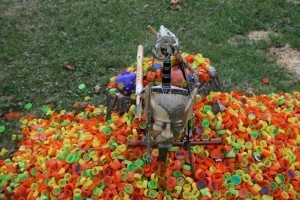
One of these caps won a trip to Jacksonville including luxury seats at a Jaguars game
my wife is a cheating whore punishmentIt will mean more time to do things that freak out many people. Right now, I spend an hour going through recycling up at the dump every weekend. I pull out coupon inserts that I share with a couple friends after I cut out the ones I want, I save the free ad forms inside the covers of discarded Uncle Henrys, I go through the Chinese cardboard bins and get any discarded codes from Coke twelve and twenty-four packs, I rip off any of the boxtops for schools points and send them to daughter Lisa in NYC and I grab any codes from Kelloggs products and email them to daughter Sara so she can use them to get stuff. When it’s decent temperature wise, I can shag enough of the latter codes so my granddaughter gets a free book from Scholastic (about thirteen so far). When I’m retired, I’ll hit this funky resource a couple times a week. I’m also going to do more walking with plastic bags, partly to snag returnables and on other trips, to clean up the nearby roadsides so Hartland looks a little better.

Once trains are in your blood they stay there forever
Retirement will mean some interesting and fun changes. We’re heading to Vancouver a week after I am done to take an eight day trip by rail through the Canadian Rockies. We loved our week doing a similar excursion in Colorado four years ago. Despite the fact that I could barely breathe on the summit of Pike’s Peak, it was a memorable vacation and I expect this will be as well. Instead of having the house to myself one day a week, I’ll have that luxury Monday through Friday as long as Beth continues taking care of Piper. Kate and I have had numerous discussions about the challenge of writing successfully when a spouse is around. It can be done, but it’s not easy, especially when you’re in one of those amazing grooves when the fingers can’t keep up with the words showering out of the brain. If I’m home alone, I have a nice ritual starting with coffee and whatever book I’m reading, Then it’s off to mail anything I’ve sold or traded and when I get home, I open any incoming goodies. Then it’s time to sit down and write. I have a couple really dark tales that need a final edit before being sent off the the Level Best and Al Blanchard contests
Now for confession time. I like to write and after twenty years or so at it, I think I’m fairly good. That being said, I’m a coward. Writing’s easy, getting published and promoting your work, not so easy. When I listen to Kate and others who are totally serious about the profession, I get cold feet. I also have to accept the reality that when I hit a period of depression, I’m not worth a damn as a writer and I can’t do much besides ride it out and when the creativity and focus return, get back on the horse and start riding. I have seven books and an anthology of young adult short stories set here in Maine that have been written and set aside. One of my hopes is that once I have that new block of free time, I’ll get serious about the parts of writing that I’m shying away from.
Reading is a very seductive process. When our mother, A. Carman Clark was alive, she could usually be found on one end of the couch in her living room and the rest of said couch was covered with piles of books, some bought, some library books, some given by friends or swapped. One of my regrets is that I never asked her how many she read in a year. I’m sure the number was impressive, particularly for someone who got up every morning at five and wrote for a couple hours. I inherited that love of reading. Thus far, I’ve read 91 books in 2015, mostly young adult fiction because that’s what I like.
All that reading has benefited me in ways that are just now becoming apparent. When I hit a creative wall while writing Finding Ginger, I set it aside My plan was to venture into new territory by starting a juvenile mystery set here in Somerset County, but at the beginning of April, another idea for a book leapfrogged ahead of it and refused to leave me alone. The story was originally going to be a foray into the genre known as New Adult, but the more I thought about it, the more I realized it was better to stick with young adult because that’s where I’m most comfortable. Singin’ The L.A. Blues is the working title. I’m at the 55,000 word mark and what has been particularly interesting is how smoothly it’s flowing. I got a hint of the interest level last Thursday when I read a couple sections while at work to Briana, who is an avid YA reader and future librarian. Halfway through my reading, I looked up and saw six other patrons listening eagerly, so I think I’m on the right track.
Part of the reason it’s going so well is due to some of the stuff I’ve internalized while reading other stuff. Another reason is that I’m including a lot of places and experiences I’ve had myself. I particularly enjoyed taking the main character, Skye, on her first plane ride from LAX to Bangor by way of Detroit and Boston. There’s also a wild car chase through the blueberry fields in Deblois. I’m including the first few pages below for you to read. Keep in mind that this is coming from the first draft.

One fun scene features Skye’s reaction as she and her mother see the light tunnel at the airport in Detroit.
Chapter One
When the bus moved on, I didn’t bother to look back, I was still steaming and full of dark hurt. What do you do when you realize that you no longer fit in? Long Beach was the only place I knew and now it seemed like a hostile and foreign country.
My hand was shaking so hard that I dropped the key twice before getting our apartment door open. Nothing like upping my stress level to go with everything else messing with my head. I put water on for tea while I changed into shorts and a tank top. I eyed the dress that mom had scrimped so hard to buy me for the spring dance. Well, that plan had gone sour pretty quickly. Maybe we could salvage something by putting it in a consignment shop. Given the way today had gone, I couldn’t imagine myself wearing it or any other dress again. Yeah, I was over the top pessimistic, but life for mom and I hadn’t been particularly kind.
The whistle from the kettle roused me from my introspective misery and I looked over the tea selection in the cabinet. Mom was big on the therapeutic qualities of herbal tea and despite my initial skepticism, I’d come around to her way of thinking five years ago when I turned twelve.
Just as I was reaching for the Orange-Mint Stressbuster, I heard the doorbell ring. We seldom had anyone use it because the neighbors, at least the few we’d made friends with, generally hollered or knocked. When I opened the door, the mailman was standing there smiling.
“Hi Skye, can you sign for your mom. I know she’s at work, but I don’t think the postal gods will care if you sign her name.”
“Sure, Mr. Benson, no problem.” I signed for the envelope and he handed me the rest of our mail, such as it was.
I looked through it while my tea was steeping. It was mostly junk and bills, but the return address on the certified letter caught my eye. It had been sent to my mother by a law firm in a place called Machias, Maine. I wasn’t even sure how to pronounce it, let alone know where it was. To be honest, what little I knew about the state came from a project we did in eighth grade when I teamed up with Maria Hernandez to do a diorama and report on different state. We’d been hoping for Massachusetts, but got beat out by a couple boys, so we settled for the Pine Tree State.
My curiosity was aroused now, so I hurried to finish my tea and went into my bedroom to see if I could find the report in my closet. I stole a look at myself as I passed the hallway mirror. The girl looking back at me wasn’t smiling and I could understand why. Still she wasn’t that bad looking, with dark blonde hair that had lots of natural reddish highlights, hazel eyes, a decent nose, a dusting of freckles across cheeks that weren’t too prominent. My ears could have been better shaped, but I fancied them as a heritage from my elven father, at least that was what I told myself, same with the slightly narrow mouth and defined chin. I’d watched all of the Hobbit movies and imagined myself fitting in Rivendell perfectly.
It took quite a while to dig through all the junk stored in boxes at the back of my closet, but I managed to find the report. I made another cup of tea and settled onto the patched sofa in the living room to refresh my memory about Maine. As I read, I wondered what had happened to Maria. She and I became casual friends during the time we worked on the project, but she ended up going to a different high school and I lost touch with her. That was pretty much the pattern of my life, either losing touch with people I liked, or doing nothing as they drifted off on their own.
Most of the stuff we’d written was pretty boring, but I started paying attention when I hit a section Maria wrote about Maine agriculture. Among the things the state was famous for were wild blueberries and this Machias place was right in the middle of where most of them were grown.
I was getting really curious now, so I turned on the computer mom and I shared. When it came to life, I resisted the urge to check my Facebook page and did a search on Machias and blueberries instead. It turned our that they’re a pretty big deal, not only in terms of how valuable the crop is, but I found a lot of research about how their antioxident level is higher than almost any other fruit. Suppose Mom knows that, I wondered.
Just out of curiosity, I opened up another browser window and checked on the law firm that had sent the letter. Everything I saw looked legitimate. They had been operating for almost seventy-five years and the three partners seemed to be liked and respected by a lot of local people. In face, the senior partner was so popular he’d been elected to the state legislature as a democrat, something that apparently was unheard of in that part of Maine.
Mom wouldn’t be home from work for another two hours. Knowing I’d hate myself for being weak, I gave in and opened my Facebook page. Sure enough, the comments under Peter’s post were at best lukewarm defenses of me, but most were the snarky and mean kind that made me leery of Facebook most of the time. In fact, I’d only created a page to fit in after we started going out last fall.
I had no clue who my father was. Mom shut down every time I brought it up, so I stopped asking her around age thirteen. In fact anything about family seemed to be off limits. I had no idea who my grandparents were or if I had any cousins. Mom had dated a few guys over the years and a couple of them were really neat, but both times she’s broken things off when it looked like they might get serious. I couldn’t remember the last time she’d gone out with anyone except her friends from work.
I knew mom had gone to college, but not where. She worked in the Long Beach Police Department crime lab as an evidence analyst and had for as long as I could remember. In fact, I had trouble remembering living anywhere except for this apartment and those memories are really fuzzy because it was back when I was three or four.
I re-read Peter’s posting, trying to see if there was anything there that might make me feel the slightest bit of hope. I should have known better. After the disaster during the end of school party at his cousin’s last night, what could I expect. Everyone was intent on getting trashed including Peter. Sure, it wasn’t the first party we’d attended where there was plenty of alcohol and drugs available, but he’d also been really pushing me to have sex and lately it seemed like getting into my pants was more important than listening to me and making me feel wanted.

“Who knew you could fall in love just by seeing a photo in a yearbook”-Skye
We hadn’t been there more than half an hour when Peter vanished, leaving me to deal with his friends who were already wasted. I handled the comments about my body for a while, but when his cousin tried to grope me, I hurried into the house from the pool area and went looking for my boyfriend.
I closed my eyes as the burning sensation that always preceded a crying episode started building. Things inside had been even worse. Lamps were smashed, I had to do a quick skip when some guy I didn’t know started vomiting in the hallway and the mixed smoke from grass and tobacco was so thick it burned my eyes and made me cough until I thought I’d pee my pants. I guess I should have realized that fate was telling me to go home, but like an idiot, I went upstairs in search of a bathroom and Peter.
I found both. The bathroom would have fit in anywhere in the rougher parts of town. It was filthy and shredded toilet paper was everywhere. I tried to hover above the seat as I relieved myself, but hit the seat when someone started pounding on the door. I didn’t even bother to flush as I zipped my pants and unlocked the door. Two guys stumbled past me as I left. Neither one looked like they were still in touch with reality.
I was entering panic mode when I opened the bedroom door at the end of the hall, hoping there was a phone I could use to call Mom and beg her to come get me. Like an idiot, I had left mine home because I’d forgotten to charge it. My heart plummeted, then seemed to freeze when I opened the door. Peter was lying naked on the bed with not one, but two girls from our soon to be senior class. One was going down on him while he was stimulating the other in a very sensitive area.
“Wanna join us? Probably not. That’s right, you’re saving it for a special time, aren’t you Skye. Too bad you’re so ordinary. Close the door on your way out.” He winked at the girl giving him head and closed his eyes.
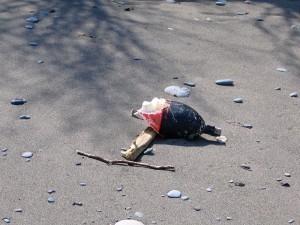
This pretty much sums up how Skye’s heart felt after walking in on Peter at the party.
Every possible thought had run through my mind as I ran from the party and stumbled to the closest bus stop. One minute I’d be raging, the next feeling like the world’s biggest loser. When I got home, Mom was asleep, not that I could have felt comfortable talking to her about my night of heartbreak and embarrassment, so I took a scalding hot shower to get the physical crud off me and then went to bed.
Oddly enough, I fell asleep pretty quickly, although what dreams I remembered the next day were pretty bizarre. One fragment had me riding a donkey through the jungle while everyone from the party pursued me on screaming elephants as they hurled rotten fruit at me. It took every bit of energy to get up and go to school. If it hadn’t been for getting our final grades and the awards assembly, I would have skipped, but I knew I’d be recognized for the one thing I was good at and hell could freeze over before I’d let something stand in the way of my moment of glory.
While I was only five foot nine, I was one of the top high school basketball players in California. Our high school had gone to the county finals twice during my three years on the team and had won this year. I would get my league MVP trophy at the assembly and nothing Peter “scumbag” Briggs did today would stop me.
I’d survived, but the victory was bittersweet. Most of the kids who were at the party didn’t bother to applaud when I accepted the award. As soon as I could, I left the assembly and hid out in the library until it was time to catch the bus home.

After living in Long Beach for as long as she can remember, Machias is quite a culture shock for Skye.
April 19, 2015
ADVENTURES IN RESEARCH – REVISITED
Susan Vaughan here. I posted this little misadventure a couple of years ago, but am sharing it again because the book I was researching, RING OF TRUTH, will be released this Wednesday, April 22.
When I attended a writers conference in Washington, D.C., I arranged to do book research at the Smithsonian Museum of Natural History. No, not the one in the film Night at the Museum; that one’s in New York City.
In RING OF TRUTH, the backstory involves a theft of crown jewels at the D.C. museum. I needed to see the layout of the area where the theft would take place and to decide if my fictional burglary was realistic, given museum security. Two weeks before, I phoned the Museum of Natural History’s manager of security. I’ll call him Smith here. You’ll see why. I explained about being a novelist doing book research and asked for an appointment to discuss security background for my novel. I stressed I didn’t expect him to reveal security measures.
So on my free afternoon, I made my way to the museum. I was directed to the security office, deep in the bowels of the building, where a helpful uniformed guard phoned Smith, but he couldn’t meet with me for an hour. As things turned out, I was lucky to have that time to visit the exhibits. Various gems and crown jewels are shown in the Janet Annenberg Hooker Hall of Geology, Gems and Minerals on the second floor. Security was visible all around—guards standing at alert, cameras on the ceiling—and invisible sensors as well, I assumed.
No one seemed to care that I took loads of pictures. In fact, I had to elbow tourists with bigger cameras out of the way to get a good shot of the Hope Diamond.
Oh, not for the book, but, well, it’s the Hope Diamond.
Finally, Smith met with me in an outer office, me seated beside the secretary’s desk, him leaning against a table. A burly uniformed guard stood by. I think he’d been flirting with the pretty secretary. I again explained to Smith my purpose, first asking about how Smithsonian Special Police were hired and trained. He gladly discussed that, stating proudly that many were military veterans, including himself.
Then I launched into the meat of my questions, saying the burglary in my story took place years previously and stressing I didn’t need to know the exact security measures, only if my burglary was at all possible. As I ran through my scenario, his blank cop face got less blank and more hostile. He insisted no burglary could happen under his watch. As soon as I said that in my story two guards were involved, he demanded—yes, demanded—I not write the story as an inside job. All the guards are honorable and honest. It couldn’t happen, he insisted.
All this time the guard and the secretary seemed to barely breathe, riveted on our conversation. Smith leaned back, arms folded, eyes narrowed, and speculated I might not be who I claimed to be. Perhaps I was using this meeting as a ruse to set up my own crime. I wanted to shout at him, “I called you two weeks ago. Why didn’t you check on my identity in the meantime? Some security expert.” But I held my tongue. I had to, with my heart in my throat (yes, it does feel like that cliché). I quickly dug out my proof. When I handed Smith my bookmarks and driver’s license, the guard and the secretary immediately asked for bookmarks. “For my wife,” said the guard.
The boss ignored them—and my proof. He was done. He directed the guard to escort me out of the museum. With adrenaline roaring in my ears, I stood (on trembling legs) and shook his hand with as much dignity as I could muster, then followed the guard down the hall, up the stairs, and all the way to the door leading to Constitution Avenue.
I may hold the dubious honor of being the only author to be kicked out of the Smithsonian Museum of Natural History. My revenge? The acknowledgments of RING OF TRUTH contain an appreciation to this manager of security.
***** RING OF TRUTH is only 99 cents for a short time at getBook.at/RingofTruth. More information about my books is at www.susanvaughan.com.
April 17, 2015
Weekend Update: April 18-19, 2015
 Next week at Maine Crime Writers there will be posts by Susan Vaughan (Monday), John Clark (Tuesday), Sarah Graves (Wednesday), Kaitlyn Dunnett/Kathy Lynn Emerson (Thursday), and Al Lamanda (Friday).
Next week at Maine Crime Writers there will be posts by Susan Vaughan (Monday), John Clark (Tuesday), Sarah Graves (Wednesday), Kaitlyn Dunnett/Kathy Lynn Emerson (Thursday), and Al Lamanda (Friday).
In the news department, here’s what’s happening with some of us who blog regularly at Maine Crime Writers:
from Kathy Lynn Emerson: On Monday, April 20, I’ll be making the last stop on the Agatha short story finalists blog tour. Along with Barb Goffman, Edith Maxwell and Art Taylor I’ll be visiting The Stiletto Gang. Then it’s on to Malice Domestic, which suddenly isn’t so very far away. If you missed the post when the four of us visited here, with links to read the stories and to the other stops on the tour, you can read it at rolling rally
Meanwhile, here in Maine (and Massachusetts, because Maine was part of that state until 1820) we’re celebrating Patriot’s Day (“the eighteenth of April in ’75/ Hardly a man is now alive” etc.) and school vacation week and the arrival (finally! maybe?) of spring. There is, however, still snow on the ground in a lot of places around the state.
One more thing, totally unrelated to any of the above. Here’s a link to Graveyard Shift for a very funny post that ran there last week.
From Kate Flora: On May 1st–now not so far away, Kate Flora, Barbara Ross, Lea Wait, and Kathy Lynn Emerson will be at the Malice Domestic conference in Bethesda, Maryland, where Kate, Kathy, and Lea are nominees for the Agatha Awards, and Barbara is Kathy’s publisher.
Remember: Only two more weeks to write that great crime story to submit to Level Best Books! Get crackin’. Submissions criteria at: http://levelbestbooks.com/submissions/
In case you missed this earlier in the week, and are just catching up with our doings, to celebrate National Library Week, we’re offering one lucky person who comments on a blog post this week a chance to win this great pair of socks:
from Lea Wait: Next weekend, April 24-26, I’ll be at the New England SCBWI (Society of Children’s Book Writers and Illustrators) conference in Springfield, Massachusetts. On Friday I’ll be available from 4:00-4:30 at one of the Mentor Tables;on Saturday I’ll be doing a signing; and Sunday afternoon I’ll be doing two workshops: “Who is Real? Combining Fictional & Real Characters in Historical Fiction,” and “”The Best Writing is Re-Writing: The Art of Editing.” The conference’s title this year is “Think Outside the Crayon Box.” Looking forward to a weekend talking books for children!
‘
An invitation to readers of this blog: Do you have news relating to Maine, Crime, or Writing? We’d love to hear from you. Just comment below to share. Don’t forget that comments are entered for a chance to win our wonderful basket of books and the very special moose and lobster cookie cutters.
And a reminder: If your library, school, or organization is looking for a speaker, we are often available to talk about the writing process, research, where we get our ideas, and other mysteries of the business. Contact Kate Flora: mailto: kateflora@gmail.com
April 16, 2015
Hallie Ephron on the pain and pleasure of standalones
Our guest today is Hallie Ephron, talking about the inspiration for her new book, Night Night, Sleep Tight.
Whenever I start writing a new book, I have the fleeting thought: If only I wrote a series. Then I 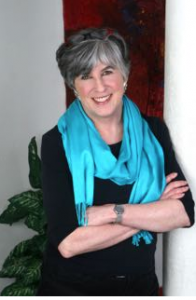 wouldn’t have to pick a new setting, invent a new cast of characters… start everything from scratch. But when people ask me if a novel will have a sequel, invariably the answer is NO WAY. Because by the time I’ve reached THE END I’ve put my main character so much grief and trauma that a sequel would cruel and inhuman punishment.
wouldn’t have to pick a new setting, invent a new cast of characters… start everything from scratch. But when people ask me if a novel will have a sequel, invariably the answer is NO WAY. Because by the time I’ve reached THE END I’ve put my main character so much grief and trauma that a sequel would cruel and inhuman punishment.
Just for instance, Mina Yetner went through trial by fire (several times) in There Was an Old Woman. I imagine her celebrating her 93rd and 94th birthdays without finding any bodies washed up in her marsh. I think of her as 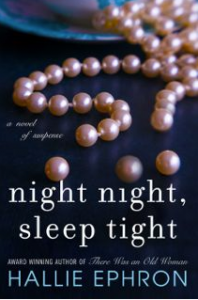 going on without me, her life unfurling in messy episodes (not acts) blissfully free of story arcs and suspense.
going on without me, her life unfurling in messy episodes (not acts) blissfully free of story arcs and suspense.
Likewise, by the end of Night Night, Sleep Tight I’d put poor Deirdre Unger through multiple traumas, starting when she was crippled at fifteen years old in a car accident. Twenty years later, Deirdre finds her screenwriter father floating dead in his Beverly Hills swimming pool and Joelen turns up again. Of course it turns out to be murder, and Deirdre wonders if his death may be connected to what happened twenty years ago.
The plot was inspired by the real 1958 murder of gangster Johnny Stompanato by Lana Turner’s 14-year-old daughter Cheryl Crane. It happened around the block from where I grew up, and I remember poring over the stories and pictures in the newspaper. In the novel, I create a whole different cast of characters enmeshed in the same scenario, and imagined myself as the movie star’s daughter’s best friend.
The story allows me to mine my own memories of what it was like to grow up in Beverly Hills in the 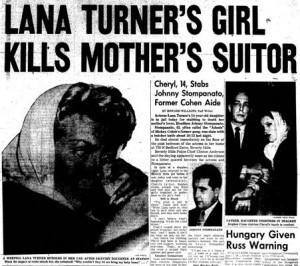 50s and 60s, the daughter of Hollywood screenwriters. We were all obsessed with the movies and the actors in them. Any shopping trip to Robinsons, walk down Beverly Drive, or dinner at Hamburger Hamlet was the chance that to spot a movie star, not all tarted up like they were on the pages of a movie magazine but looking like a real person. We were, all of us, obsessed with beauty. Obsessed with fame.
50s and 60s, the daughter of Hollywood screenwriters. We were all obsessed with the movies and the actors in them. Any shopping trip to Robinsons, walk down Beverly Drive, or dinner at Hamburger Hamlet was the chance that to spot a movie star, not all tarted up like they were on the pages of a movie magazine but looking like a real person. We were, all of us, obsessed with beauty. Obsessed with fame.
But it’s a narrow line between fame and infamy (think Lindsay Lohan, Kim Kardashian, Charlie Sheen…), and who would want to be one of those stars whose talent ripens into stardom and then festers into notoriety? Sure celebrities want to be recognized, but they don’t want people to gawk.
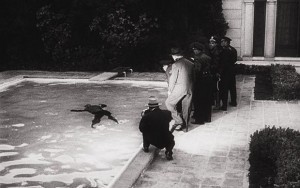 When I was finished writing Night Night, I imagine Deirdre and Joelen happily slinking off into anonymity. Getting on with their un-noteworthy lives while I dream up another story with new people to torture. viagra prescriptions without medical
When I was finished writing Night Night, I imagine Deirdre and Joelen happily slinking off into anonymity. Getting on with their un-noteworthy lives while I dream up another story with new people to torture. viagra prescriptions without medical 
And, as you may have learned reading earlier posts this week, one lucky person who comments on a post this week will win a pair of these:

April 15, 2015
Writers–Did You Know Your Library Can Do All This?
 Our guest blogger today, in honor of National Library Week, is—you guessed it—a librarian!
Our guest blogger today, in honor of National Library Week, is—you guessed it—a librarian!
To all the writers out there: I wanted to remind you of a few of the wonderful resources that libraries offer and most are free.
Local Author Readings. Many libraries invite local authors to speak either individually or as part of a panel of three or four. This can be a great way to get your book out in your community and meet other local authors. Another benefit is librarians are very good at spreading the word. When we have a good program, we like to share it with other libraries across the state.
Writer’s Groups. The South Portland Public Library and many others in the state have writer’s groups that meet monthly or more frequently. These tend to be groups where members share what they’re writing if they feel comfortable and encourage each other. They are often lead by a library staff member and have an annual event where members who would like to read some of their work in front of the public do.
Interlibrary Loan. Through your local library you can borrow things from around the world. It can be  books, dissertations, movies, books on CD, or microfilm. If you are writing about Detroit in the 40’s you could request a copy of the Detroit Free Press on microfilm and, using the pictures, see styles and places you are including in your work. This is almost always free but sometimes there is a cost associated with it.
books, dissertations, movies, books on CD, or microfilm. If you are writing about Detroit in the 40’s you could request a copy of the Detroit Free Press on microfilm and, using the pictures, see styles and places you are including in your work. This is almost always free but sometimes there is a cost associated with it.
Local History. In most towns, the public library is the keeper of the local history. High school yearbooks, local newspapers, city directories, plot plans and local family histories? We’ve got that. At the Portland Public Library, we have the Portland High School yearbooks dating back to 1921 and city directories which show who lived at an address starting in 1823. Most libraries also have a few employees who are long time residents and would probably be able to put you in touch with other residents who could answer almost any question about local history.
Reference. There is nothing we like better than a really tough reference question. Last year we received a call from a writer with a series of questions about mythical beasts. It took three of us a number of days but we got the answers and we still talk about how much fun it was to track down the correct answer. Earlier this year the writer sent us a signed copy of his book and it is proudly displayed in a shared office.
Databases. Kathy Lynn Emerson did such a great job covering that I’ll refer you to her entry on Monday.
Quiet Space. We are a lot livelier then we were in the past but I’m sure you can find a quiet corner if your usual workspace gets taken over for an afternoon or weekend. And remember: most libraries in Maine have free wireless connectivity.
 Joy and Pride. When you go in and see your book on the shelf right next to all the greats, make sure you let your local librarian know so we can celebrate with you.
Joy and Pride. When you go in and see your book on the shelf right next to all the greats, make sure you let your local librarian know so we can celebrate with you.
I’d love to hear from you about other great things that libraries have done for you.
Lisa Marie Joyce is the Outreach Librarian at the Portland and South Portland Public Libraries. She is a graduate of U of Maine and Simmons College Graduate School of Library and Information Science. She is a native of Portland and began her work life as a Tax Accountant.
And if you’ve read this far–here’s a treat: One person who comments on our blog this week will win a pair of these:
Lea Wait's Blog
- Lea Wait's profile
- 509 followers




